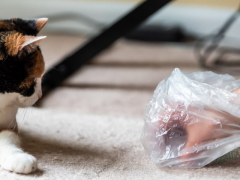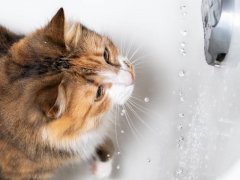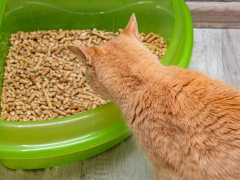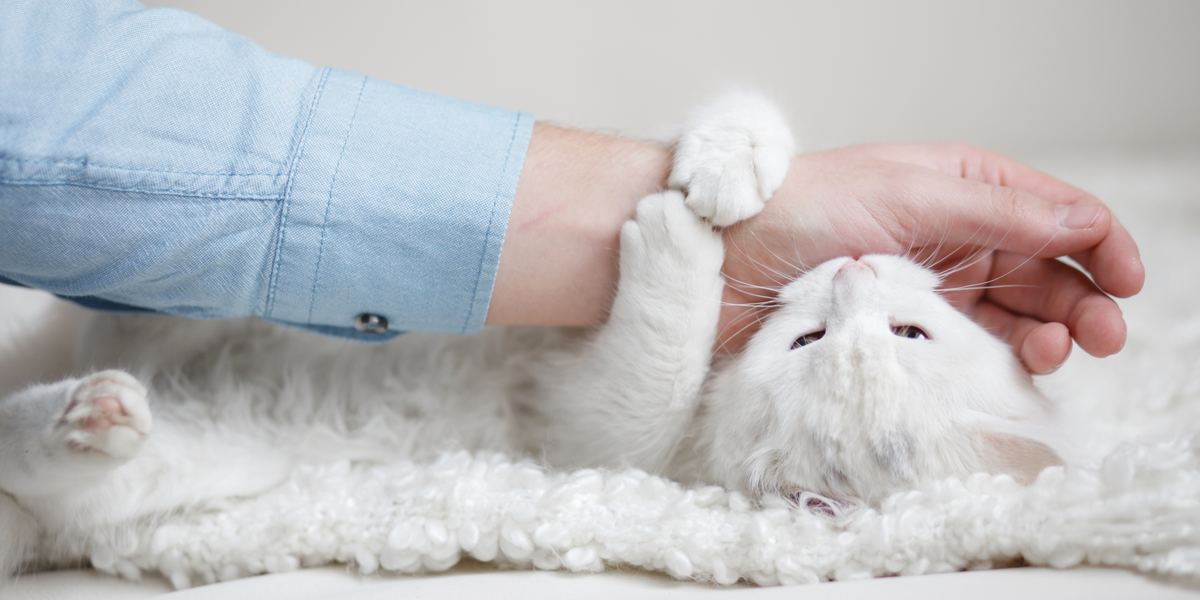
The majority of cat owners have been there. You’re having a wonderful cuddle with your cat, they are affectionately licking you and purring while you snuggle on the couch, and then suddenly, without warning, you find a set of teeth firmly implanted in your arm, usually accompanied by some vigorous clawing!
Or perhaps, your cat follows up her licking with firm but non-aggressive nibbles. If you are wondering why your cat does this or if you did something wrong, you are not alone!
Every domestic cat breed shows this behavior. This article will consider what this behavior may mean, the common reasons for it, and how to help reduce it.
Why Do Cats Lick Their Human Owners?
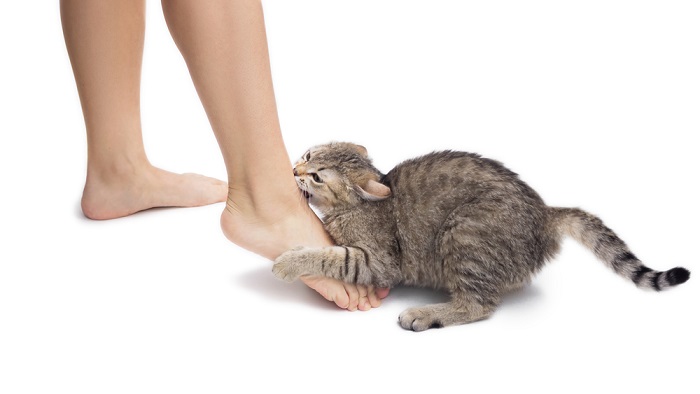
Licking is a grooming behavior in the cat world. As you may well know, cats’ tongues are rough in texture, like sandpaper, due to the stiff keratin spines covering their surface. This makes it an effective tool for the grooming process.
Also Read: 10 Amazing Facts About Your Cat’s Tongue
Cats will undertake licking and mutual grooming to socially bond with other cats in their colony. When they lick you, it is a sign of affection, and your cat choosing to bond positively with you!
Is Cat Saliva Clean For Humans?
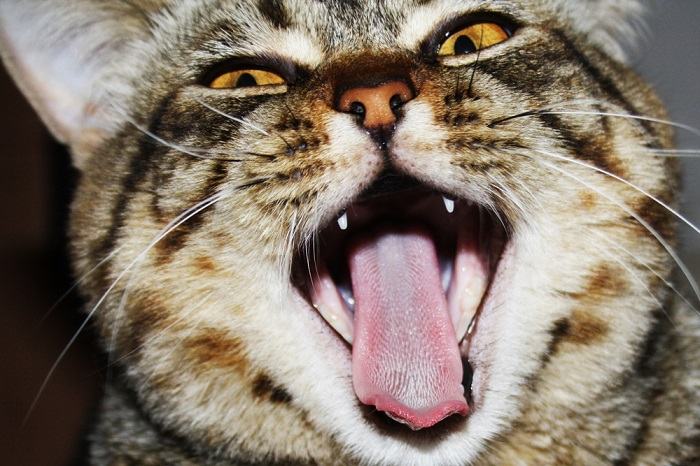
Cat saliva is not clean for humans. It carries many potentially harmful bacteria. Their saliva will cause no harm if your cat is simply licking you as your skin acts as a natural barrier. However, severe infections are possible if your cat bites you and breaks the skin.
Always wash your hands after your cat has been licking you and speak to your medical provider if your cat has bitten or scratched you, breaking the skin.
Why Does My Cat Bite Me When She’s Being Affectionate?
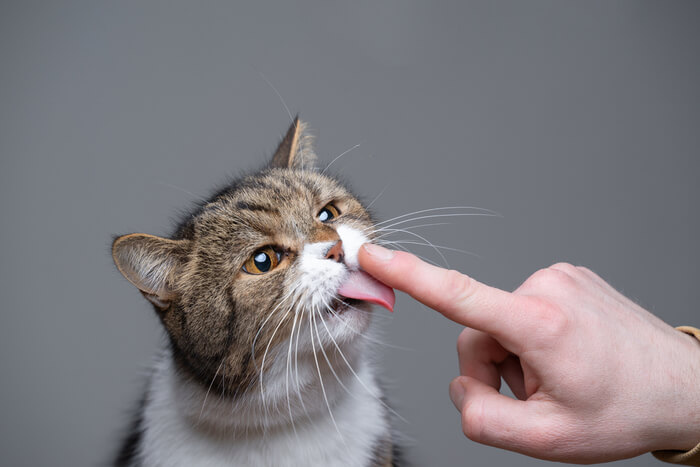
Cat behavior is still an incomplete field. We do not always have a complete understanding of why cats do what they do, but there are some theories as to why cats may bite when being petted.
“Love Biting”
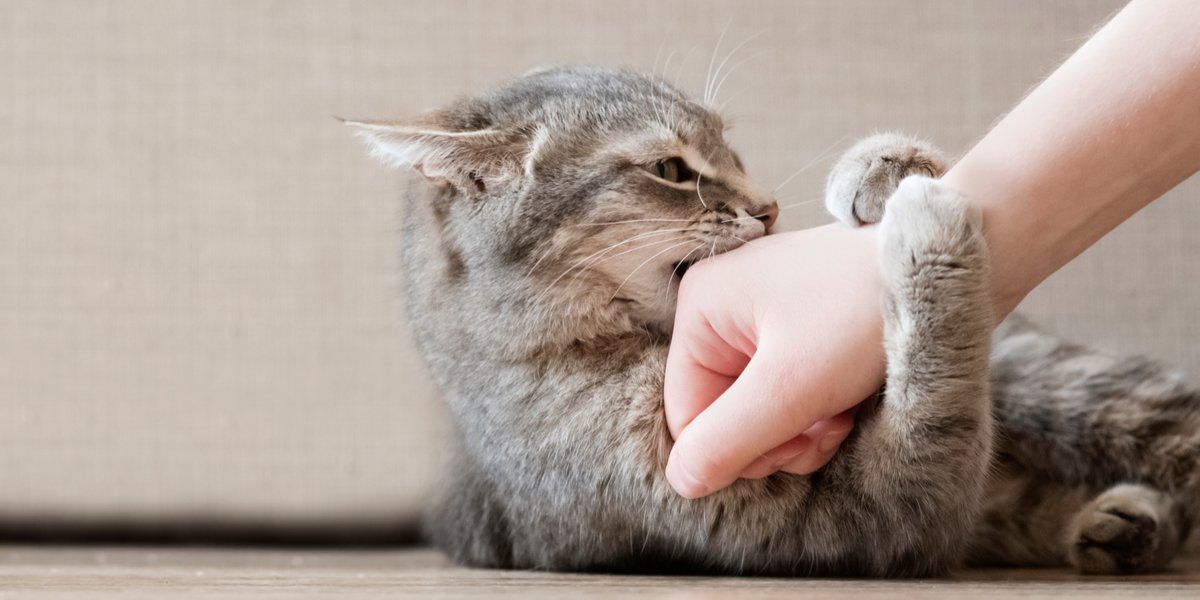
Some cats will give a gentle bite or little nip to their owner while showing affection. This behavior usually happens when cats feel bonded with their owners and mimics behaviors seen in both kittens and adult cats. These little love bites typically aren’t accompanied by warning behaviors, and your cat may seem comfortable and at ease.
Grooming Behavior
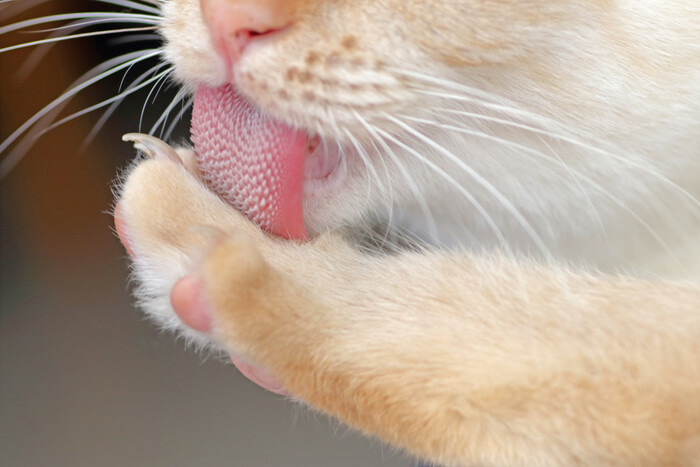
Licking, as discussed, is a grooming behavior. When cats groom one another, this can often extend to gentle nibbling to help free up small hair mats or pieces of dirt. If your cat is licking you with gentle nibbles, they may be grooming you as a social bonding experience.
Frustration Behavior
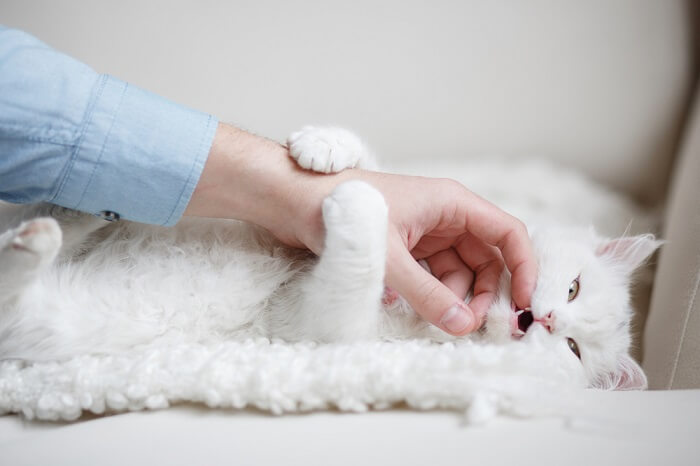
It will be no surprise to cat owners that cats are hardwired to feel in control. A particular negative emotional motivation for cats is that of frustration. Their “frustration system” can be triggered by failed expectations, inability to get their paws on resources they would like, or feeling out of control.
If a petting session isn’t playing out how your cat wants it to, this can lead to frustration behaviors, including biting. These bites will usually be more forceful or aggressive than affectionate or play-related biting. Increasing playtime can help to reduce frustration behaviors.
Overstimulation Or “Petting-Induced” Aggression
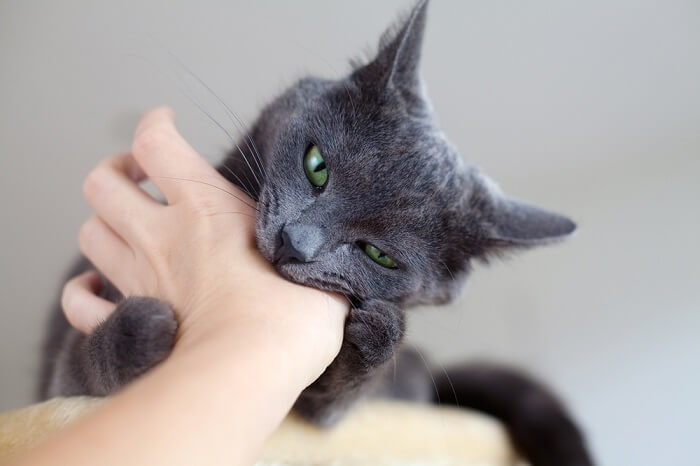
Similar to frustration behaviors, if your cat feels overstimulated, they may bite as a result. Petting-Induced aggression is very common, contributing to as much as 40% of cases of behavioral issues regarding aggression seen by referral services.
The exact mechanism for this behavior isn’t completely understood, but theories such as “sensitivity thresholds” describe your cat’s limit for being touched. This limit varies from cat to cat, and biting is your cat’s way of saying, “Stop now!”
Play Behavior
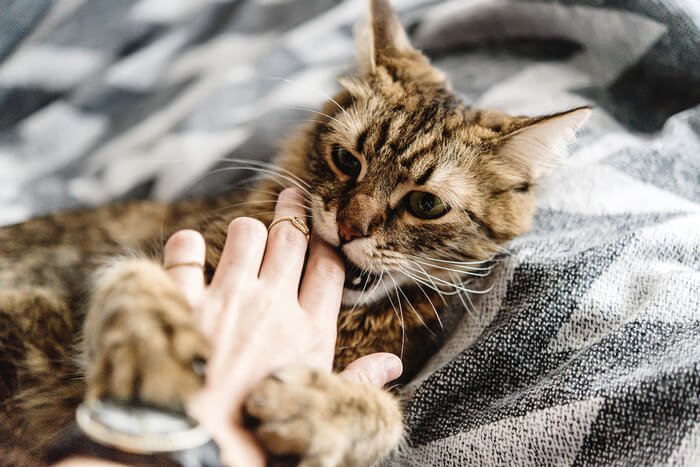
In order to understand why your cat bites you, you need to understand why cats exhibit aggression in general.
Cats often bite as part of play interaction; this may be especially true if a cat toy is involved or if your cat starts to lick you during a play session. It can be challenging to differentiate play desire from overstimulation aggression, but looking for subtle differences in your cat’s body language may give you a clue!
Pain
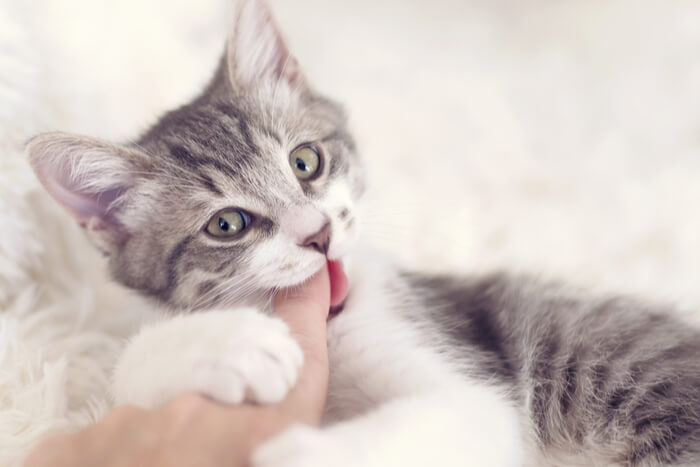
Cats will sometimes bite or exhibit other aggressive behaviors because they are in pain.
It is also recognized that cats may bite their owners during a cuddling session due to pain or discomfort. Cats are notorious for being able to hide signs of pain, which is an evolutionary trait to hide signs of weakness. If you are unsure if your cat is in pain, especially if they are elderly or have a chronic health issue, then chat with your local veterinarian for advice.
Also Read: What Can You Give A Cat For Pain? 6 Vet-Recommended Options
What Should You Do If Your Cat Bites You?
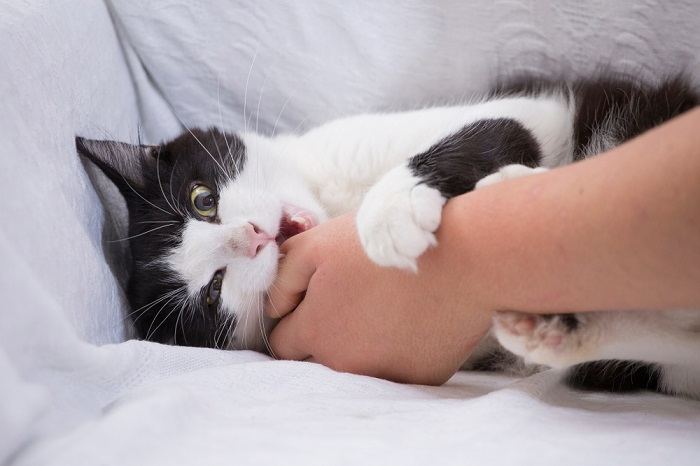
If your cat bites you, quickly remove your hand and try to redirect your cat’s attention to a toy or blanket.
It is essential should your cat bite you during a petting session, you do not shout at her. This can lead to frustration and anxiety behaviors developing and may make the problem worse. Never physically correct your cat. It is never appropriate to use forceful methods to try to correct behavior. This will worsen aggression and is not something your cat will understand.
First, gently extract yourself from the biting situation and discontinue petting, redirecting your furry best friend’s attention away from you with a toy or a blanket to snuggle into. It can sometimes make things worse trying to immediately extract your hand without a redirection, given that cats are visual hunters designed to track movement!
Also Read: How To Train Your Cat Not To Bite
At this point, check your skin to ensure that your cat hasn’t punctured or broken it with her teeth. As we have discussed, cat saliva carries many potentially harmful bacteria. If you have a break to the skin, wash it thoroughly with soap and water. It is sensible to contact your health care provider after any animal bite that punctures the skin.
Antibiotics are sometimes necessary for managing cat bites, especially if a deep puncture is present or the bite occurs near a joint. If you live in an area where rabies is endemic and the bite breaks your skin, then always talk to your health care provider, even if your cat has been vaccinated, as a precaution.
Also Read: Rabies Vaccine For Cats
How Can I Avoid My Cat Biting Me When I Pet Her?
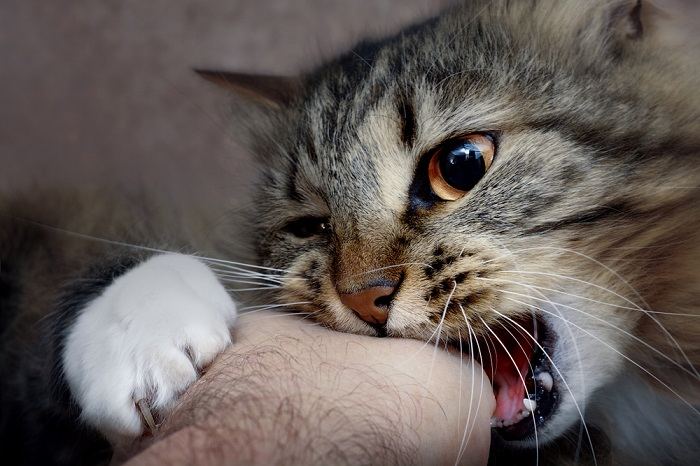
Cats usually display subtle clues that your enjoyable petting session is about to head south.
Look Out For Clues
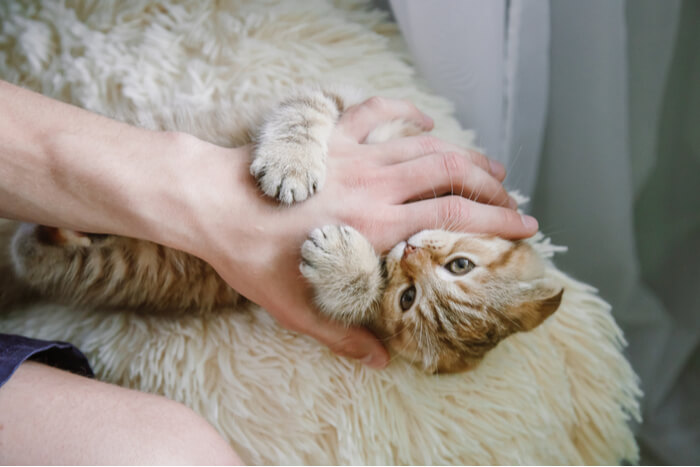
Cats will occasionally bite when they’re pet in a way that is overstimulating.
While it often feels like your cat’s bite during petting comes out of the blue, there are some subtle signs you can watch out for that might suggest your cat is going to bite. Examples include flattening or rotating her ears, flicking the tail, or her body becoming tenser.
Keep a check on how long it takes your cat to show these signs, and always pet her for less time than that (while still keeping an eye out for warning signs!).
Change The Way You Pet
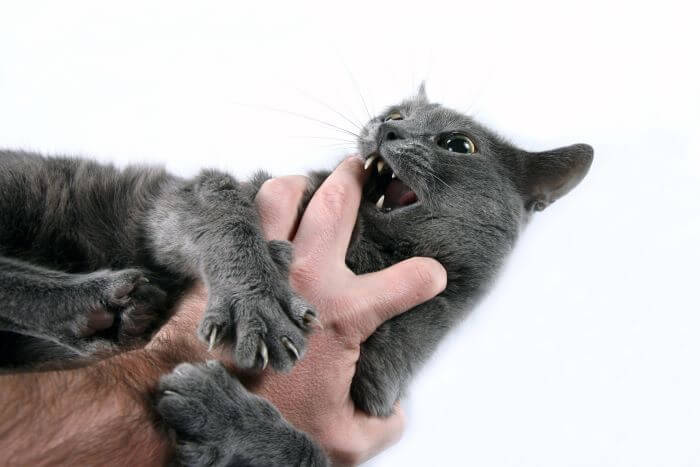
Some cats may become overstimulated during a petting session and lash out with bites and scratches. Other cats will reach a “tipping point” after sensitive areas have been touched for too long.
Another thing to consider is how you pet your cat. Cats generally are more tolerant of their head, neck, and back being stroked than their tummy. This extends from preservation behaviors in their wild counterparts, who will protect their vulnerable bellies from injury.
Also Read: Do Cats Like Hugs?
While some cats love a short belly scratch, usually the biting and scratching will follow shortly after. If you know this about your cat, choose to pet her in ways she is more tolerant of, choosing the body parts she prefers to extend cuddle time.
Counter Conditioning
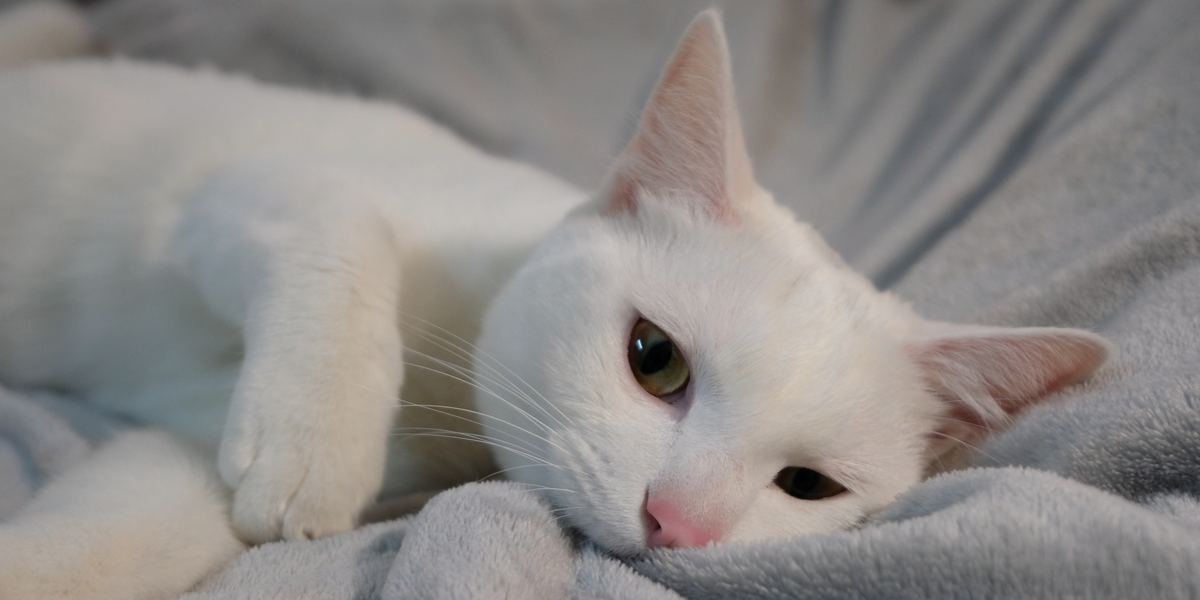
Counter conditioning involves using a positive resource, such as treats, to reward your cat for behavior, in this case, petting. It helps build a positive association and increase tolerance. It is important never to push your cat until they show signs they are unhappy.
If you read your cat’s body language and alter your petting expectations to be in line with your cat’s wants, it may not be necessary to use counter conditioning methods but positive reinforcement can sometimes be beneficial.
Final Thoughts
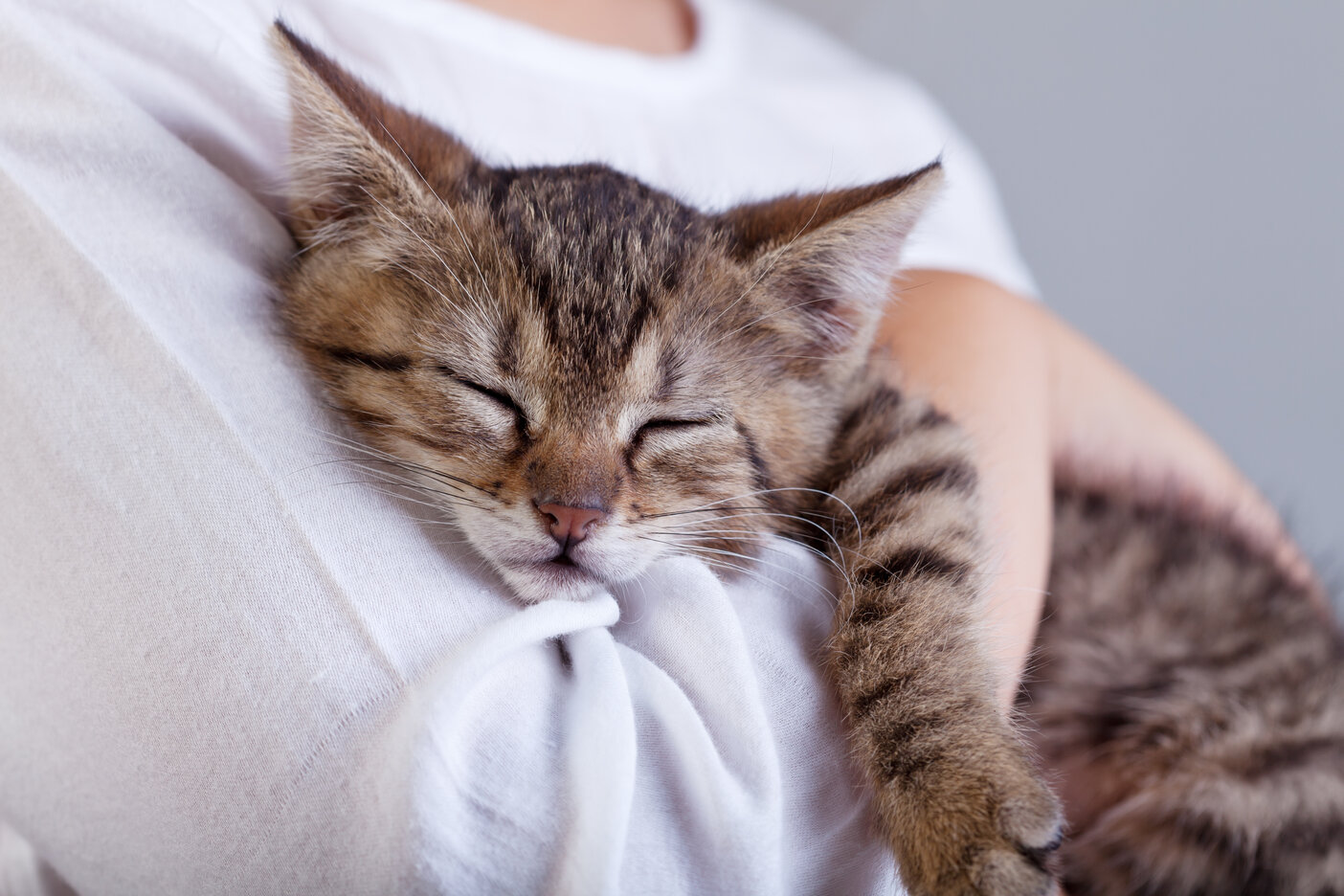
Any cat parent knows how complex their furry friend is, and gaining their consent for a petting session is just one of those complexities!
Recognizing the different possible reasons for your cat biting during a petting session and what you can do to help will not only improve your bond with your cat but also reduce the risk of a nasty infection resulting from a cat bite.
If you are unsure why your cat is biting your during cuddling sessions, then speak to your local veterinarian, who will be able to offer you some helpful advice tailored to your furry friend’s needs.
Also Read: How To Deal With Food Aggression In Cats
-
Amat. M and Manteca. X (2019) Common Feline Problem Behaviours: Owner-directed aggression. Journal of Feline Medicine and Surgery 21 245-255. DOI https://doi.org/10.1177/1098612X19831206 Retrieved 22nd June 2022
-
Ellis. S et al. (2013) AAFP and ISFM Feline Environmental Needs Guidelines. Journal of Feline Medicine and Surgery. 15 219-230 DOI https://doi.org/10.1177/1098612X13477537 Retrieved 22nd June 2022
-
Heath. S (2018) Understanding feline emotions and their role in problem behaviors. Journal of Feline Medicine and Surgery 20 437-444 DOI https://doi.org/10.1177/1098612X18771205 Retrieved 22nd June 2022
-
Humphrey. T et al. (2020) The role of cat eye narrowing movements in cat-human communication. Nature: Scientific Reports. 10 DOI https://doi.org/10.1038/s41598-020-73426-0 Retrieved 22nd June 2022
